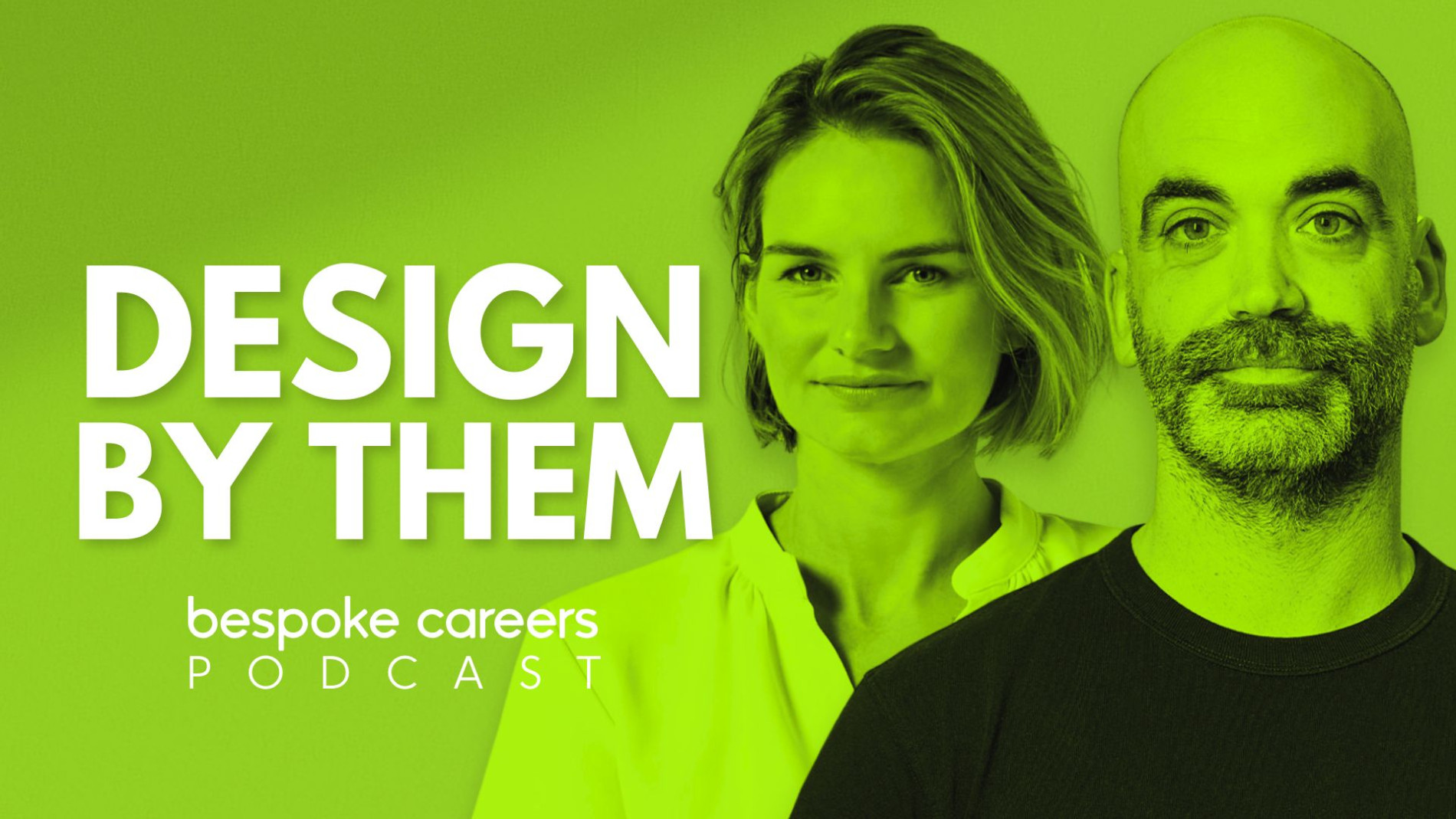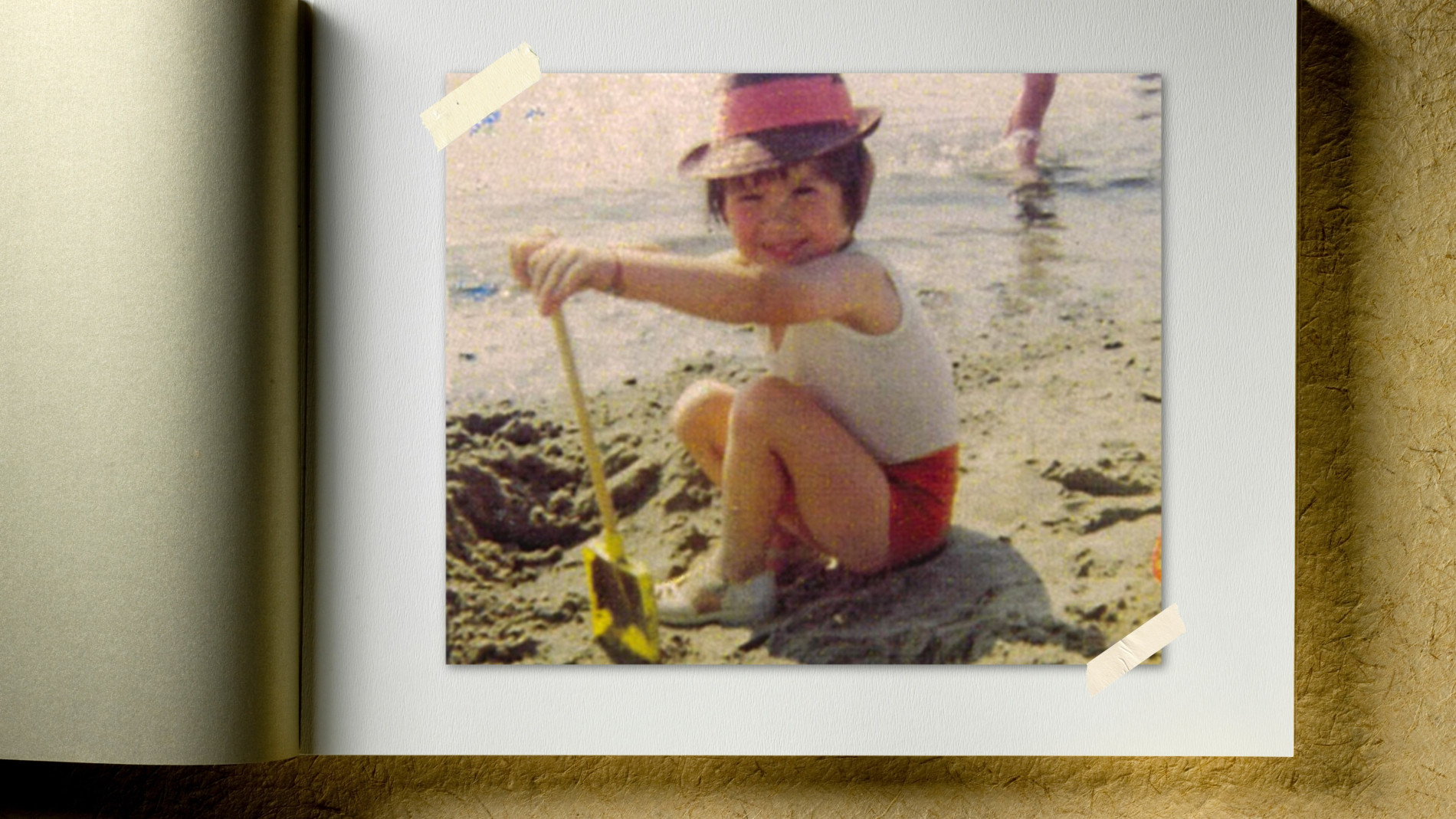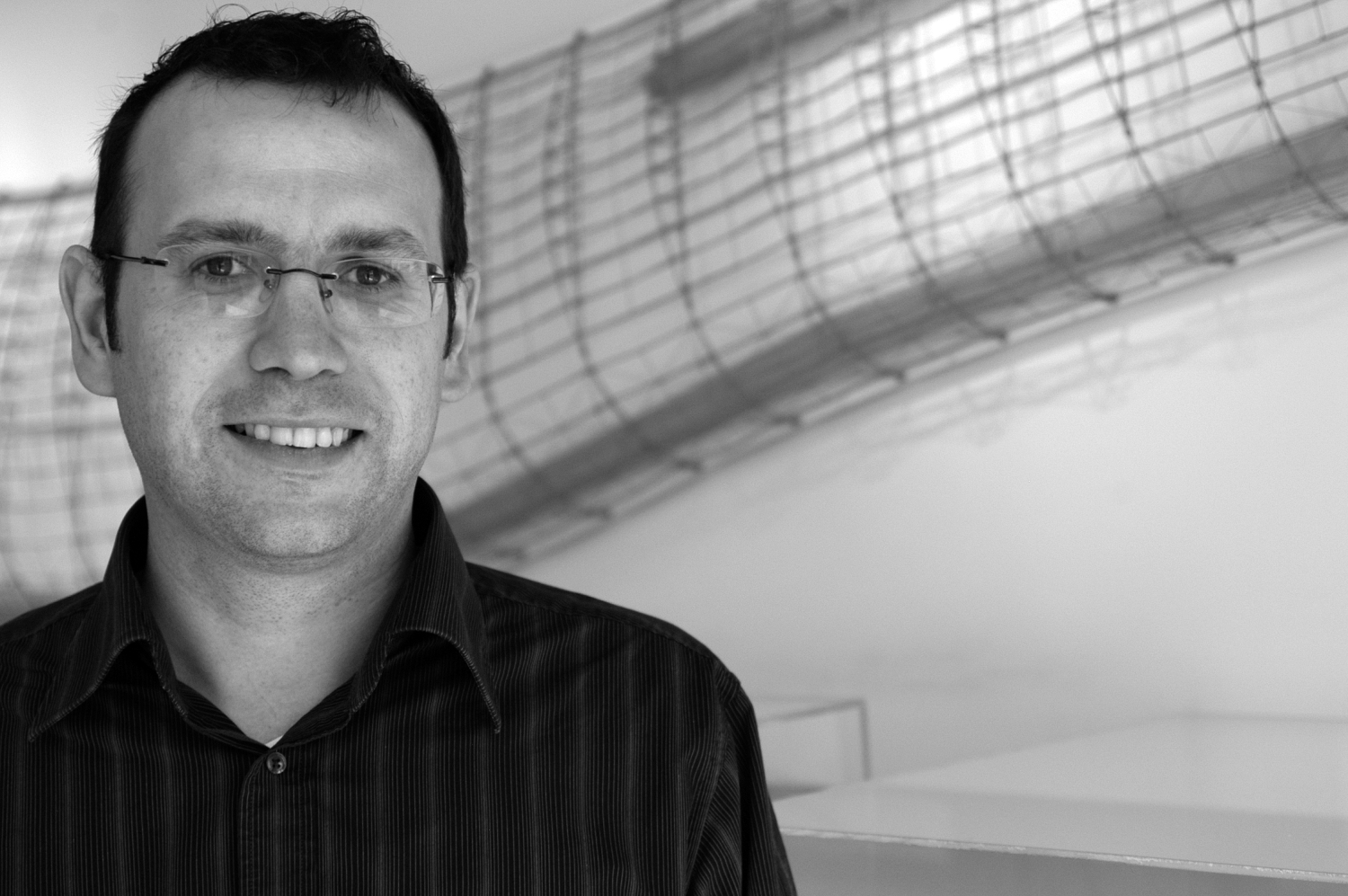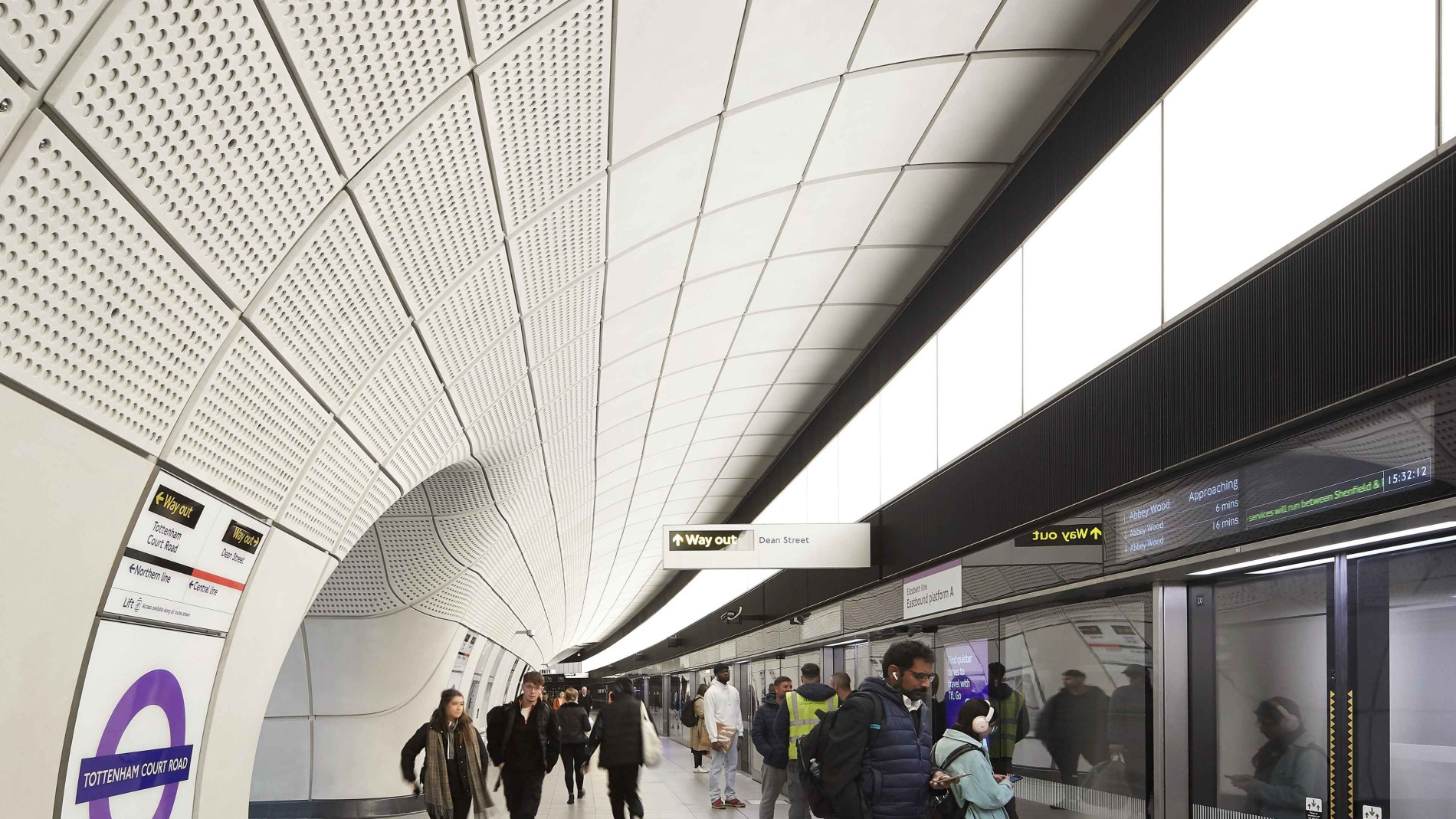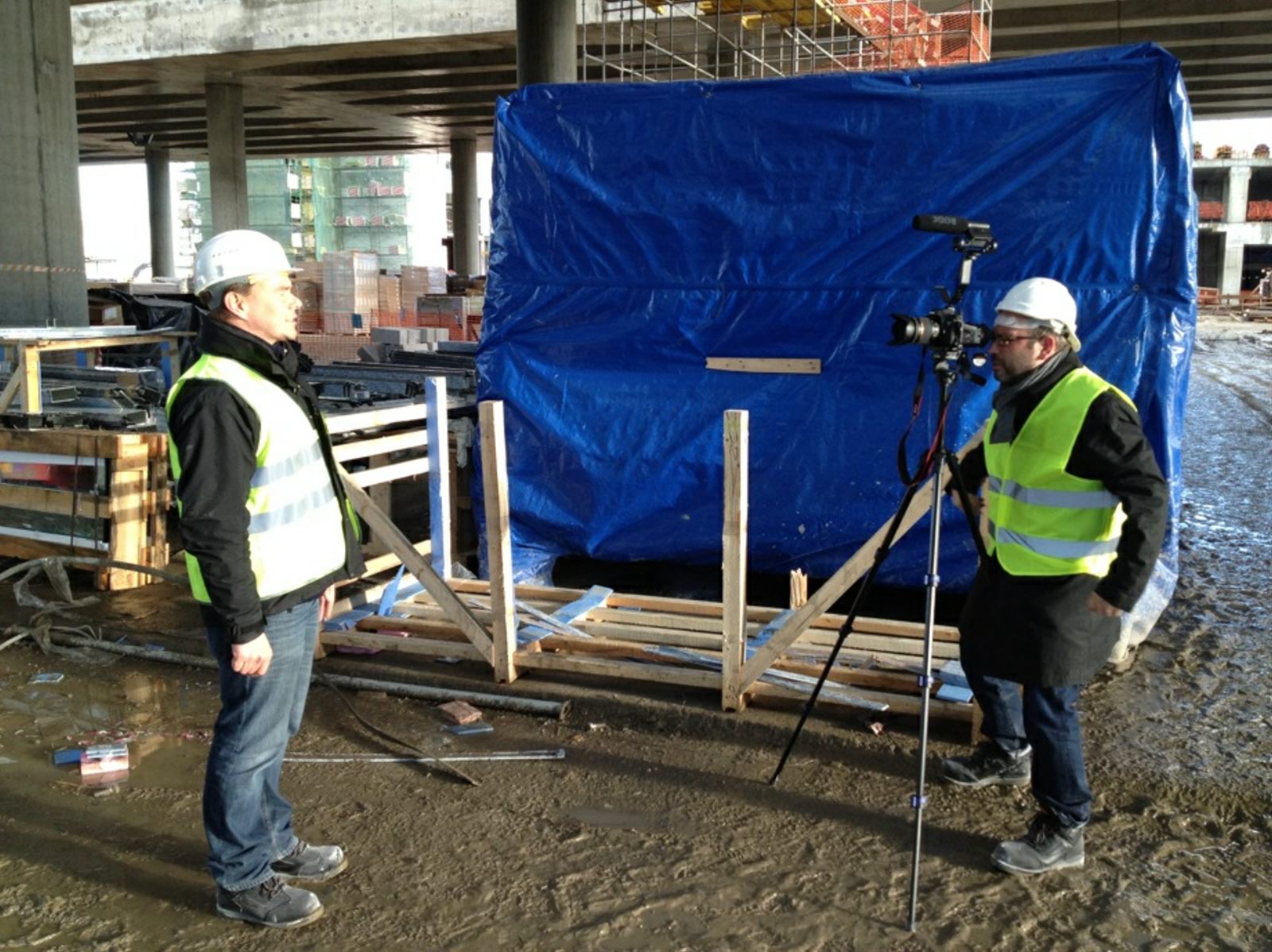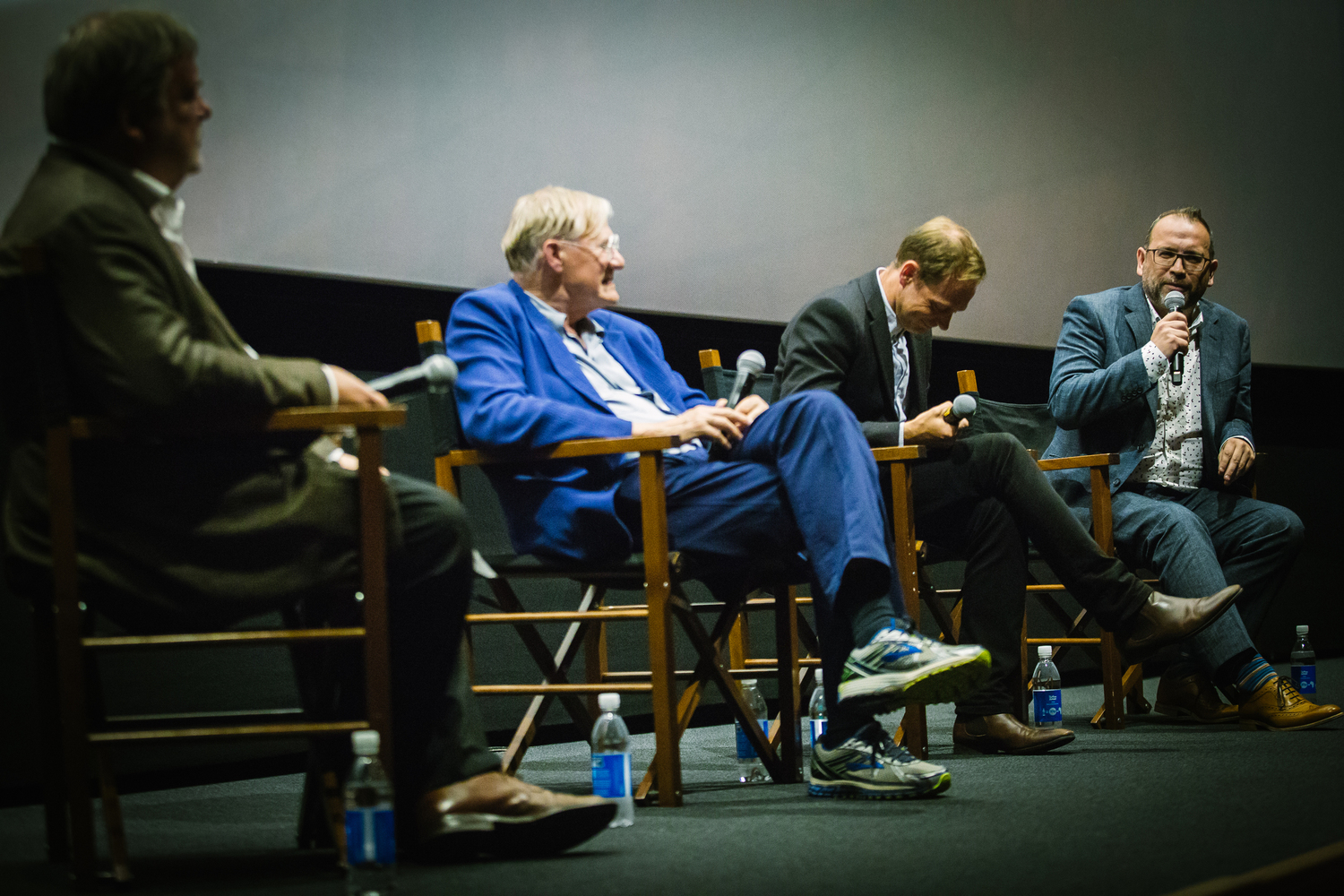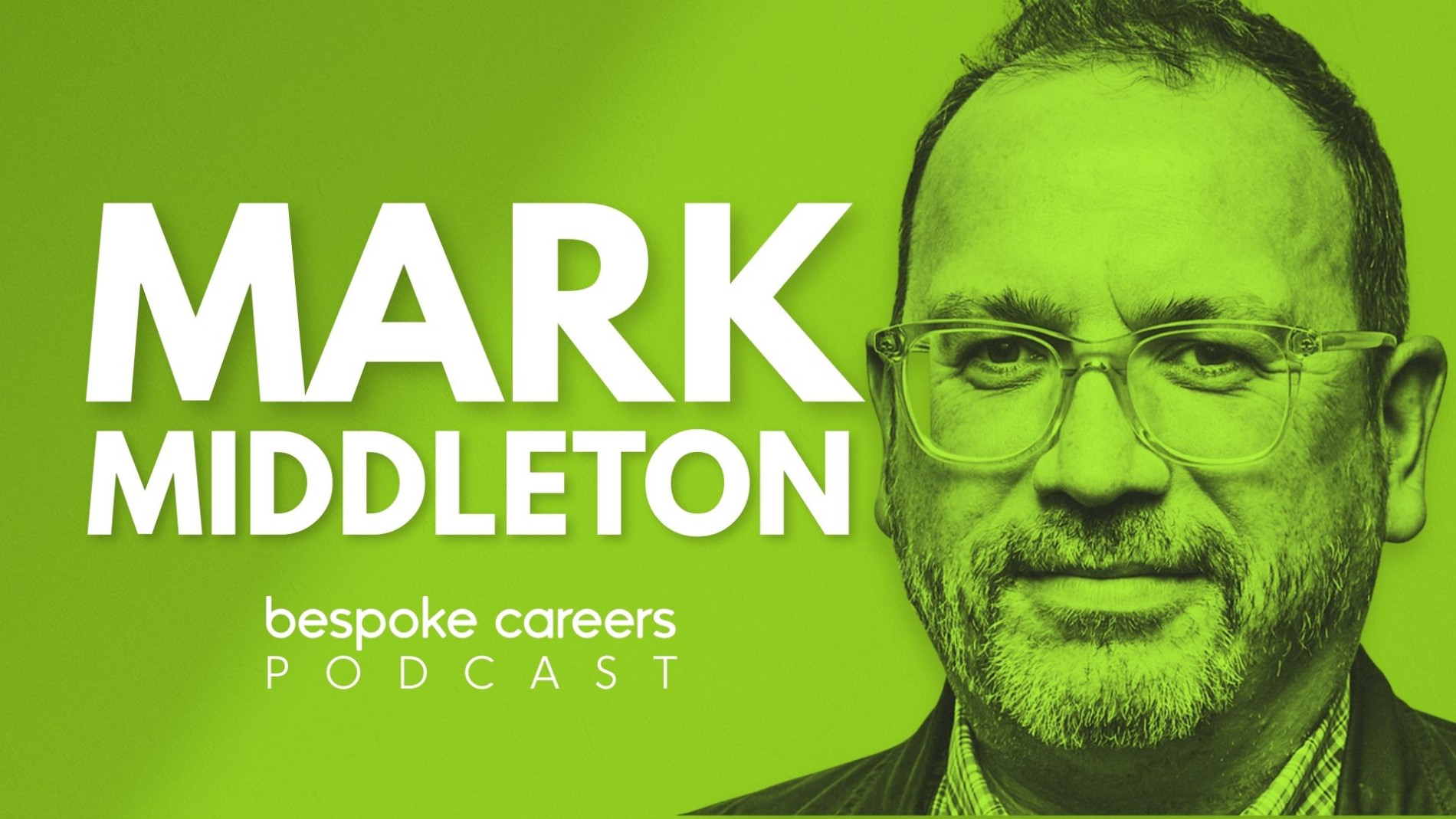
Mark Middleton on leadership, learning and running a global practice
Grimshaw's Group Managing Partner reflects on his career in architecture and the culture that has shaped his work.
Mark Middleton is Group Managing Partner at Grimshaw, where he has spent three decades shaping some of the practice’s most significant rail, aviation and metro projects. After leading the London studio he is now based in Sydney, responsible for the practice’s eight international offices. Here he talks about growing up around building sites, the culture that defines Grimshaw, what it takes to run a global studio, and why he rejects the clichés of the profession.
Why architecture?
I’ll answer it in two ways. Why in the first place? All my family are tradesmen. They’re bricklayers and plumbers and what have you. I grew up playing in the sharp sand on building sites. I worked out two things. One, I didn’t want to do that job. But I liked building things and being involved in all that. I was relatively good at drawing and I naturally went into architecture. I wanted a professional job. I didn’t want to do the things that my dad and my uncles were doing.
What keeps me going is the people you meet. Realising architecture is part of it and walking around the spaces you create is incredibly rewarding, but in between that there’s a lot of conversation, getting on with people, collaborating, having ideas together. When you’re surrounded by good people it makes you want to come into work every day and enjoy what you’re doing. So I would say it’s the people.
How practical experience shapes better design…
I think I’m very practically minded as a result of my upbringing. I used to bring my toy soldiers and play in the sharp sand. In the 70s they put dye in the sand to make it yellow, so I used to come back like a Simpsons character and be scrubbed clean by my mum. Later my dad put me to work, trying to teach me how to lay bricks, which I was hopeless at, but I’d take his tools and make dens and do all those things.
When I got into my architectural career, I worked on the Jubilee line for a period as an industrial designer. I curated my career to get the job at Grimshaw because I knew they were into castings and metal processing and forming and all that. I sought out a job to do that. My drawing style is very graphicky, so it was always good for details. I always found I could sit down with a pad of A3 and rattle through the details. Building and the process of building was in the forefront of my mind. I don’t do so much of that now because my role’s changed, but I really enjoyed that and the problem-solving, putting these things together.
It helps in design. When younger architects are designing I can immediately say they’re going to have trouble building that. You need to think about the building process and manufacturing and how that might help you. That’s what we do a lot at Grimshaw. Practices should be taking students on a ride-along. They should be going to sites, listening to the meetings. Maybe controversial, but work from home is not necessarily good for young architects, because the incidental conversations, the “do you want to come to site,” they miss those. You’ve got to be present and available to get those opportunities. It’s essential for a young architect.
Architecture school and a switch in work ethic…
I wanted to go to Dundee because it was one of the few architecture schools in an art school. I wanted to be surrounded by that. Plus it was cheaper to live. I wanted to work in London, but not necessarily study there. No shade on anyone who did. I was a terrible student until university. Boyish, didn’t put time into stuff, just enough. Then at uni a penny dropped. I treated the whole thing like a job. I was in studio 8 till 6 or 9 till 6, working like that all the time. I was that irritating student. In the first two weeks when everyone’s down the coffee bar getting drunk and not coming in early, I was in the model shop making all the bases to my models, so when the final thing was due and all was drawn, everyone would go how have you done all those models. I’d done them in the first three weeks. I was very organised. It changed me and my attitude to learning. I was training for the job.
I was lucky to go to Copenhagen for most of an academic year on an Erasmus exchange, which unfortunately people can’t do anymore. It was formative. The students there designed in a totally different way. The Danish thing about light and how light enters, big models, hours on solar analysis. I found it super interesting. Dundee was good because there wasn’t much else to focus on, so you focused on your studies. If I had a regret, I didn’t have enough fun.
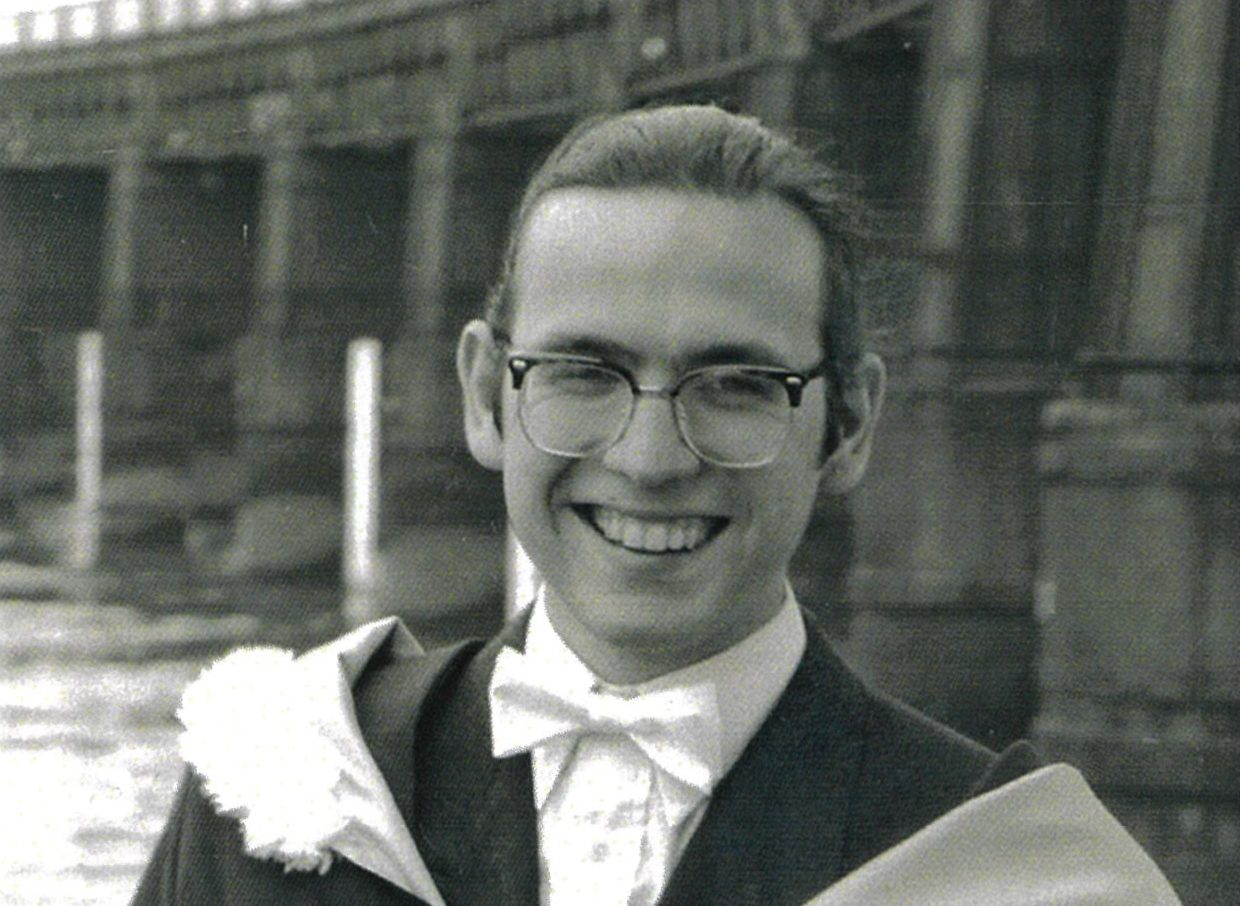
Mark graduating from the University of Dundee
Joining Grimshaw, working with Sir Nicholas Grimshaw and staying in one job for 30 years…
Grimshaw were my favourite architects when I was a student and I really wanted to work there. I didn’t know this when I got there, but you think things are top-down and some practices are still like that. With Nick, he was always “throw your ideas on the table, fight for them.” The most junior person could come up with the best idea, they just might not know what to do with it. He’d say, I don’t mind arguing, but I am going to win a lot of the arguments because I’ve been arguing longer than you have. There was a great equality in discussions. Nick wasn’t involved in everything either. It was different partners doing things. I was given a great chance by Andrew Whalley, who’s now the chairman, who was an associate at the time. That’s why I stayed, and upholding that legacy is part of what I’m doing now. Make sure younger architects get chances to come up with ideas.
We’re very big on origination and projects and trying to move up the chain, not just waiting at the letterbox for a tender invitation. Actually go and chase and generate our own projects. We try to get those who are good at that into positions where they can use those skills, because what defines a partner or an owner is the ability to win work, through competition or relationship or whatever. That’s the differentiator. It’s always been a fun place with great people, because people feel they’ve got the opportunity to speak up. They’re not in some monastic tutelage, waiting for the big pen to float in and pass down ideas – which is nonsense. Architecture isn’t created that way.
Becoming Group Managing Partner at Grimshaw…
You’ve got to live it. One big change we made, ten or fifteen years ago, was that roles like managing partner or group managing partner are roles. If you move an architect into a business role only, what do they do after that? So what we said was no, you’re an architect but you take on a role. I’ve still got projects. I’m doing a lot of West Metro projects and Sydney Airport and other things.
We do it like a presidential thing. It’s a three-year term. You can never do more than two terms. It keeps it fresh. You’ve been asked by your fellow partners to take on the responsibility, then you hand it on. When I was London managing partner I handed it to Kirsten Lees and supported her into the role. Then I went back to projects. You don’t lose connection with the market. If you’re making business decisions, you’re still connected to winning projects and resourcing and all that stuff. You’re not hovering above it. You’ve got to have that connection. It’s a real benefit.
Transitioning into leadership and staying close to projects…
You’ve got no training. There’s the Peter Principle. You can be promoted into incompetence. You don’t know whether someone will be good at it. At some point in the future you’re going to sit around the table and most people will have held that role. They’ll understand the responsibility that comes with it. There are elements that aren’t glamorous. I’m naturally decisive, so I find it quite easy. A lot of architects shy away from decisions. I’ve learned in business that making a decision is the most important thing. Even if it’s the wrong decision, as long as you’ve got the humility to change your mind if it turns out wrong. There are no rules against it. You don’t lose face.
How the global studio runs, board and regions…
If you talk about the offices, we’ve got a unique approach. Other practices are versions of fly-in fly-out. They’ve got a headquarter model, maybe one or two people somewhere. We have a much more meaningful connection with the cities. We’ve got 65 people in Sydney, about 50 in Melbourne. They’re proper local studios connected to the market. Our fees are pegged to the local market. The internationalness comes for free effectively. If you want to know how we’re building metros or aviation or lessons learned from abroad, we can bring that. If you don’t, we don’t.
In my job it’s a lot of conversations. I chair the global board, which we’ve changed to have regional representatives. I’m also the regional managing partner for Australia as well as Group Managing Partner, just to keep the numbers down. We’ve got North America, Europe, and the Middle East as an opportunity region. We’ve got about 20 people there who are working away and do some work, but generally they’re helping other studios run projects into there. It’s a structured set of meetings. I meet the chairman once a week. We have a global board every other week. We go through the financials and make strategic decisions.
I’ve got a separate meeting that does all the operational departments. Marketing, sustainability, all sorts of behind-the-scenes stuff. Important members of our company who are non-architectural need to be looked after and have good ideas on operations. Then we put strategies together for five-year business plans and all that.
During the day I do Sydney stuff. Run projects, design reviews, normal architectural stuff. I’m supposed to be fifty-fifty, but it feels like 200 percent. I’m doing two jobs. It seems to work fine. No complaints from the partners yet. I’m very good at partitioning stuff. There are tasks that expand to fit the time available, so you’ve got to be disciplined. I’ve become very clear and quick in decision-making. Do the necessary consultation with partners and the chairman, make a clear decision, communicate it clearly and move on to the next one, because there’s always another one. Procrastination is the enemy.
Did you see yourself in this position?
No, it wasn’t an ambition at all. I thought I could become a director. I’m naturally ambitious. You’ve got to back yourself. I was confident about having ideas. I always thought I was good with people, so I could be good with clients and win work, which is a differentiator. In terms of this job, you’re asked to do it. Your fellow partners show their faith by asking you. There’s something grubby about trying to become it. It shouldn’t be an ambition. It’s a trust. It’s a role you’re given and then you walk away from it. The reward is making sure the business makes the right decisions at that time.
I progressively thought I could do it as I was lucky enough to do big projects, manage bigger teams. It’s not such a big step from managing big teams to managing a studio. I was pretty good at economics at A-level. I’ve always had a reasonable business mind. Business is really easy. It’s revenue and cost. It’s an overly simplistic thought, but there you go.
The chairman asked me to do this role just as Lindsay Urquhart and I were thinking about moving to Australia, so I made one contingent on the other.
On moving to Australia…
I’d got to the end of being in London, to be honest. We’d been nominated for the Stirling Prize with London Bridge, which I thought we should have won. I still think we should have won. But you know, zeitgeist. Bloomberg won the year before, so a giant project in the City of London was never going to win again. There was an end there and I wanted a different challenge. I wanted to work in a smaller studio and feel that again.
My connection with Australia goes back to the beginning. I did the bid with Keith Brewis and the design work on Southern Cross Station, which set up our office in Melbourne and started our presence in Australia. I’d been back more or less every year since, for work or to visit. A lot of my friends had transferred. I liked Australia. Maybe it was always going to happen. It was Lindsay’s choice. Lindsay wanted to move. I was up for a move. I thought I was going to go to America before I met Lindsay, then this came up. It was exactly the same time Vincent Chang was stepping down at the end of his term. They wanted me to do it. There was an established business there that does a lot of metro, rail and aviation, which are the three things I’ve got more experience in. I could slot in. There are a lot of Brits there, engineering firms and people I know. It wasn’t entirely new.
But Australia is different to the UK. Your connection to market is a bit like it was at the start of Grimshaw. There’s a closer connection. In London there’s a veil of tendering and other processes. It’s very regimented. Gone are the days where you haven’t done a school but can illustrate you could do a school. Now it’s “what are the last five schools you’ve done.” Young practices can’t break into that. It’s impossible. We partner with younger practices and HS2 and others have been good at pushing that.
In Australia you’re close to it. You can meet clients, ministers, they’ll come to your office and chat. It’s a better way because you understand clients better. I’ve managed to establish, in nearly five years, some good connections. Each studio has its own character and things they do. We’re more connected in Sydney to developer clients and workplace and resi than anywhere else in the world. We probably don’t have much of that in London, but we have lots of it in Sydney. Each place has its own connection to market because markets are different.
Does that mean the strategy morphs in different locations?
Yes. It’s different in different places, but we also get larger significant bids. Those go up to the board for agreement if they involve more than one studio, or fees are more than 30 percent of fees in any one year, or a large number of people will work on it. We strategise that, or if it’s going to cost a lot. It’s usually aviation or metro projects. You can kind of go for anything you want. For me it’s been great. I’m now bidding a high school. We’ve got some residential stuff, a lot of industrial. I’ve been able to do lots of things. In London I was firmly in the rail and aviation box, and other departments had other connections. It was difficult for me to have a diverse influence on projects. By moving, I could.
Working on monster projects…
Architecture is a slow profession. People’s expectations should be calibrated correctly. It does take a long time. We had Neil McClements, who won the Stirling for the Elizabeth line, giving a keynote in Sydney last week. He gave it again to our office. It was 13 years on that project. I think I did the bid with him. He wasn’t even a partner when we started. There have been lots of people on that job, some now in Sydney.
To young people, it’s in stages. On London Bridge we had a good strategy. There was myself, a principal and an associate principal. We strategised. I’ll run the project now, when it goes on site the principal runs it, then you’ll run it for a year and a bit, then you’ll hand it over and come back to the office and hand to this person. We had a strategy laid out over the life of the project on site, and people cycled in and out. Project leaders are sometimes reluctant to do that because they think they hold all the knowledge. They don’t. Knowledge can be passed on. Professionals can pick things up. You can’t hand over relationships, but you can plan for it. You’ve got to be active. Some leaders are just lazy. Keep it as it is. People stagnate or get bored and want a new challenge. It’s up to us to recognise abilities and place people in the right place.
When you’re designing and building a project there are different skills. Being a generalist who can design, do the commercials, manage on site, do details, is rare. Partners tend to be generalists, but others are too. You need all those skills and experience. Break it down, make it fun and interesting. I get joy from walking around public buildings we do. Paddington, London Bridge. I’ve had a hand in it as part of the Grimshaw team. There’s a sense of pride. Yes, it’s eight years of your life, but we cycle people in and out. If you want to change cities you’ve got to be in it for the long haul. It’s daunting when you’re younger, but embrace it, don’t run away from it.
London Bridge was up for the Stirling and the Elizabeth line won it. What is the impact of such a prestigious award?
It was very well deserved. It’s a complete work, down to the industrial design. Fantastic project. It was nice for Nick. He’d had the disappointment of Eden, then we had the disappointment of Bloomberg, and London Bridge. It was nice to win finally. Everyone felt a collective glow around the world and we all raised glasses.
How much will it affect our business? To be controversial, I don’t think it will affect it at all. We’ve won a prize for metro and everyone knows we can do metro. We’re one of the best in the world at transportation. It’s an affirmation. It won’t change our business. Why you win is zeitgeist. I don’t think the best building wins. The Eden Project didn’t win. It depends on politics and what’s being talked about and the jurors. That’s not sour grapes. It’s just the facts. It’s difficult for a jury to reconcile back-to-back housing in East Anglia with a station in central London. How do you do that? It’s super hard. It depends on the jury. Sometimes they’re good, sometimes you think how on earth did these people get on the jury.
Neil was about to go through the process and I’d gone through it earlier. He asked for advice. I said enjoy it. It doesn’t matter whether you win or lose. Who cares really. Enjoy it, because it’s nice. You’re in the limelight. The project is talked about. Fantastic whether you win or not.
My best memory from that whole thing was in Sheffield. They do a thing up north where you give a presentation. They asked who do you think is going to win. Everybody did the “they’re all worthy” thing. It got to me and I said I think Annalie’s is going to win. They went what do you mean. I said we want to do regional housing, it’s on the agenda, the president of the RIBA runs a housing practice, there’s the thing about gender equality and Alex is a strong leader of that. It ticks all the boxes. I put a bet on to win. My only regret was I only put ten pounds and not a thousand. Eleven to one. Brilliant. It’s a lovely scheme. Great that they won. Fantastic for their business. Transformative.
Film at Grimshaw, telling complex stories well…
Film has always been important to me. My mum used to take me to the ABC cinema. I was obviously a bit of a nightmare child, so she’d drop me off on a Saturday while she did the shopping, give me some money, and I’d go and see the Children’s Film Foundation films. I was the kid wide-eyed watching films. I watch anything to this day.
I did the MA when I was London managing partner. I felt like my brain was turning to mush. I wanted to become a better writer and have some structured learning. I wanted to walk into a room where I wasn’t expected to talk first. When you’re London managing partner, everyone looks at you to start talking. I wanted to sit at the back and have someone else talk to me and structure my learning. I was really interested in Korean film, which has become very popular with Parasite and all that.
I love the language of film. It’s a really effective way of getting complicated stories across. Film has gone a bit weird recently with digital and improv and two- and three-hour films. They’re rubbish. I thought The Brutalist was just not a good film and should never have won the Oscar. I love storytelling and getting so much information across through visuals and speech.
I decided to make two films. I made a film at Pulkovo and a film in Reading. I was key grip, best boy, I did all the editing and the music. We did everything. It’s a bit shonky, but I did it to show Nick [Grimshaw] and said, Nick, this is how we should get some of the stories about our projects out.
We’ve done 40 or 50 films now, two or three a year. They’re really valuable. The issue is the architects and project leaders want to tell the whole story. You should only tell part of the story, the bit that’s most interesting and important. The edits go out to six or seven minutes. Nobody cares. It’s got to be two and a half, three minutes. Two and a half hour films don’t interest me. Ninety-minute films interest me, because there’s discipline.
It’s a great thing we do. There’s an archival legacy as well, because we can get people who’ve done the project. Some are still with us, some are not. We’ve gone back through older projects to revisit them. It’s a great resource. We’ve never made enough of it on our socials. Typically Grimshaw, we’ve hidden our light under a bushel. We’ll continue to make them. We’re thinking about the ones we’ll make in future. We want to do Parramatta Pool and a couple of other projects. We’ve got a filmmaker, Ned Williams, who’s done the majority. I’ve got a great relationship with Ned. As a producer, I don’t try to take over like a lot of architects. I’ll say it’s a bit too long, I don’t like the beginning, we should start like this, and give general notes. He’s the filmmaker.
It’s important to have something else that’s architecture-adjacent. It’s helped with our CGIs and animations. I’ve encouraged dolly shots and other techniques, because we’ve all got filmic language. We watch so much visual media we’ve been schooled in it. The GoPro walking round a building nonsense like a video game, nobody wants to experience that. You’re selling a building. We’re selling an idea or an experience or a feeling. Use filmic language.
I really enjoyed doing Some Kind of Joy, the film about Nick [Grimshaw]. We had a filmmaker do it but I enjoyed being involved. We had a proper premiere at a cinema by Piccadilly Circus. It was fantastic.
Speak plainly and drop the archi speak…
Architects should take complicated things and make them simple and then communicate them simply. Too often architects wrap it in what I call archi-bollocks. They talk in a weird language that only architects use, with self-aggrandisement and pomposity and pretentiousness. It turns me cold. Why can’t we speak clearly about it, because we’d have more effective communication with users, clients, developers, engineers and collaborators who don’t use architectural language. They would respect us more. I think we harm ourselves.
Architects want to show how clever they are. It’s a difficult job. I’ve balanced all these conflicting things and now I’m going to show you how I did it. It’s like a magician telling you how he’s done the trick straight after. Just leave it as it is. Simple communication. The building’s about this. Leave it at that. They seem to want to write a 5,000-word essay. It’s pointless.
Lessons for young architects…
I was determined to become an architect. I thought it matched my skills. I wanted to work for Grimshaw, so I set out a plan in terms of the work I got, so my CV was built the right way. I had a really good work ethic. My dad used to say let no one outwork you. You can be as clever as you want, but let no one outwork you. I’m not advocating long hours. I don’t work long hours. I like to work normal hours but super effectively. Don’t let anyone outwork you. Find something you enjoy and surround yourself with great people. Align yourself with people who are fun and share their experiences and stories. I’ve been lucky at Grimshaw with people I’ve worked with and for, generous with their time and influential. I’ve really enjoyed it. I feel lucky and I’m looking forward to many more years of doing projects and completing amazing spaces around the world. I haven’t built anything in Sydney yet, so that’s an ambition.
Be decisive and don’t procrastinate. There’s too much weight put on decisions. It starts at college. There’s pressure to have the idea. When I do design reviews, people sit up and do them for hours on end. I don’t. Ten or fifteen minutes. Are we going this way. Then they go away and test it and come back. I’d rather have five fifteen-minute reviews than sit around for an hour with everyone speaking and self-aggrandising.
The other thing is – I’m not sure architecture is an art. It’s a way of operating that involves creativity and ideas and great thoughts and some philosophising and social values, but it’s a method of working. You shouldn’t think it’s an art. I don’t know much art you do with 70 or 80 other people and other disciplines. You rely on other disciplines. It’s different.
Hopefully you can pick the peanuts from the poo there.
The gripe with architect stereotypes…
I generally hate architects. The more you look like an architect, the less good you are. People swanning in with big glasses, all in black. It is like a middle aged man buying a sports car. You are making up for something, my friend. The best architects I know look normal. Architecture is normal. You’re not a master of the universe. You’re in the middle and your job is to bring everything together. That’s why architects can do it until they’re 80 or 90, because it’s collaborative, not on your shoulders alone.

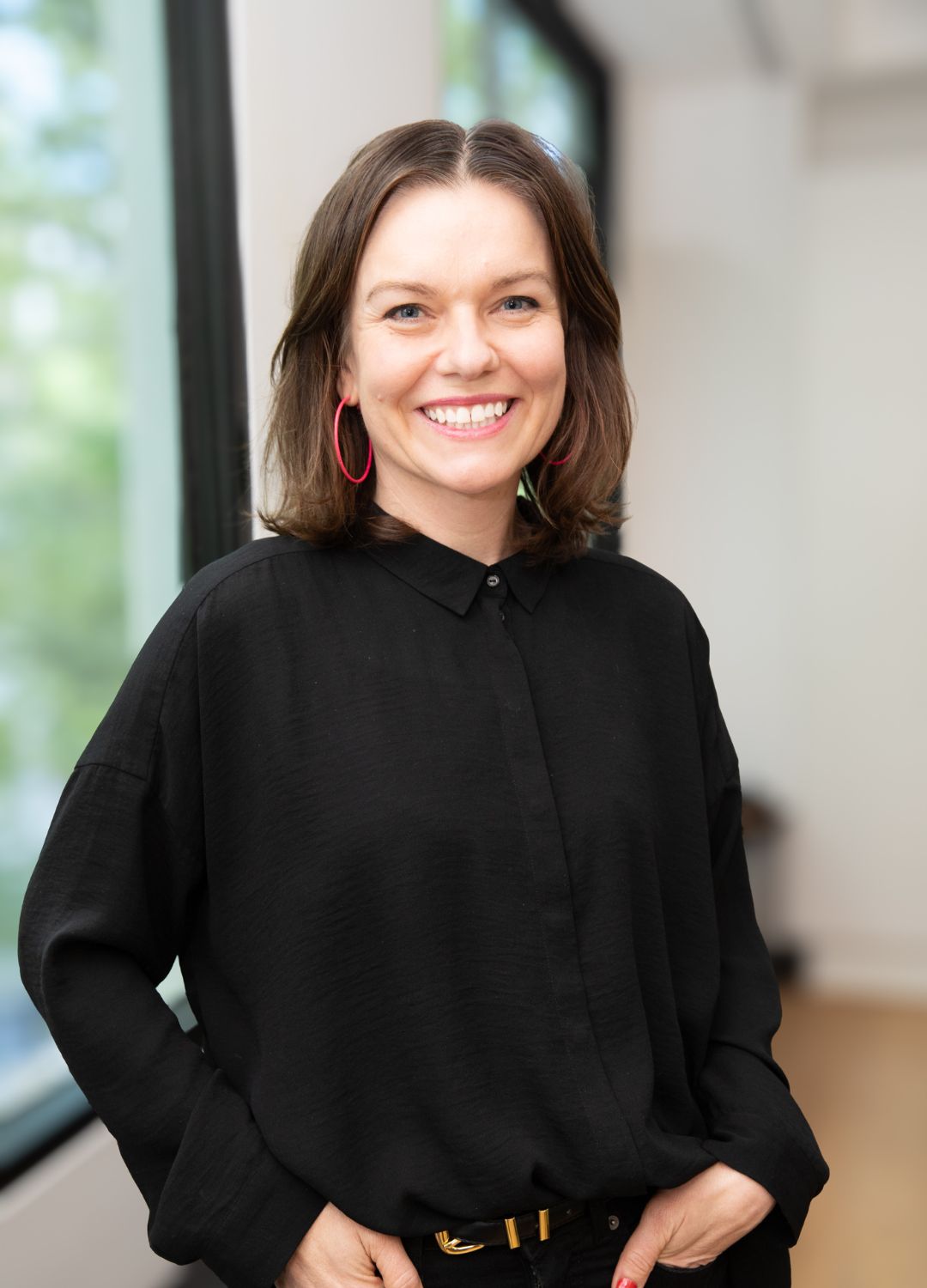
Looking to hire top talent
 or advance your career? Let's talk.
or advance your career? Let's talk.
We connect exceptional firms with talented professionals.
Let’s discuss how we can help you achieve your goals. Get in touch with the team today.
Related Posts

Thomas spoke to Chris Simmons about navigating architecture school without a blueprint, the realities of early career practice, and how building a personal brand opened doors the profession didn’t.

